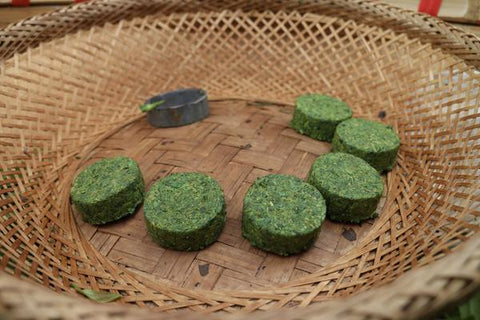Travel back in time with these living relics from a bygone era, when the first flowering of tea culture began.
These compressed cakes of partially-ground tea represent a style of production dating back to the eighth century, with a taste as unique as their history. Unlike most other green teas, it is rather warm and savory: notes of hay, grain, and stewed green vegetables play in a velvet mouthfeel, enriched by a distant earthiness.
Like Mary Poppins's magic tote, the tiny Zi Sun cakes provide tea just as needed. Pour boiling water on a cake, filling the pitcher halfway, and let it steep as long as you like; when ready, fill it completely and pour it straight into cups, without stirring. Refill the pitcher with hot water and repeat the procedure over and over again the whole day long.
We suggest to follow the Gongfu Cha method; a pitcher and boiling water is all you need.
A THOUSAND-YEAR-OLD TEA
Back in the Tang Dynasty (618–907), tea was unknown to the Western world and loose-leaf tea was yet to be invented. At that time, the leaves were ground and compressed into tiny discs (cha bing), which were spitted and cured over fire. Before preparing the tea, the discs were crumbled into pieces, which were then boiled in water together with salt and spices.
We know all this thanks to Lu Yu, the first writer in history to have dedicated an entire book to tea (Cha Jing, 'the Classic of Tea'), in which he mentions Huzhou tea as the best in the region. Cha bing from Guzhu specifically were used as tribute tea for Tang Emperors.
More than a millennium has passed and the customs have changed; but in Guzhu we discovered a farmer lost in time, still producing the tiny cha bing according to the ancient Tang Dynasty recipe.


Historical reenactment of the production of Zi Sun Cha Bing (Lu Yu Memorial site, April 2017, Guzhu).